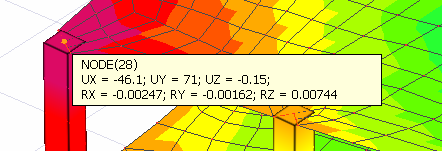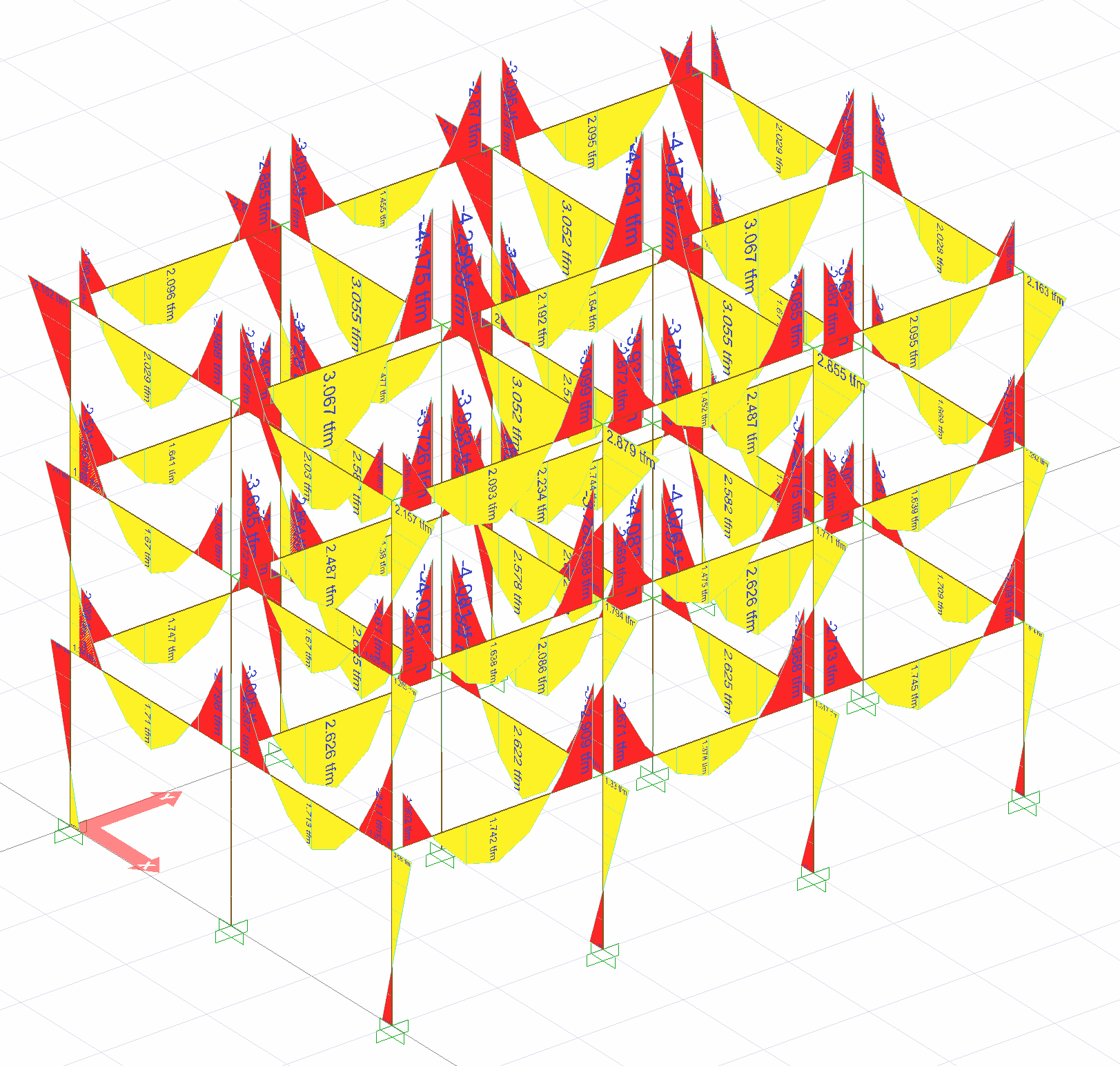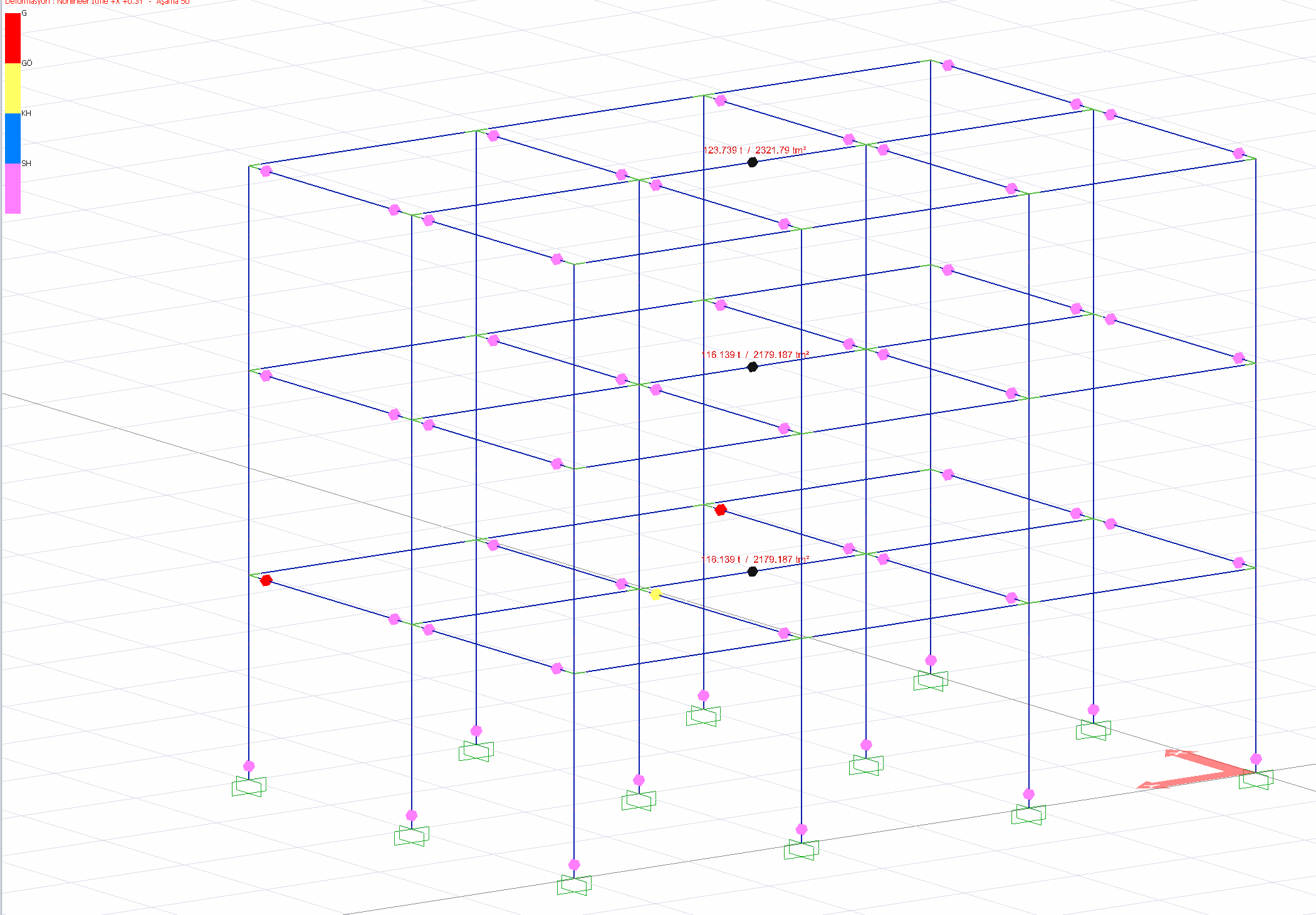15.4.5
In the performance analysis (linear and non-linear) internal forces and strains are used, rod and shell finite elements are used using a three-dimensional analysis model. The structural system model of the existing buildings is created by using a rod finite element in the column and beam elements, and a shell finite element in the floor and curtain elements. Finite elements are modeled in three dimensions, taking into account all six degrees of freedom in total, three translational and three rotational freedoms of the nodes. In nonlinear performance analysis, a stacked plastic behavior model (plastic hinge) is used for columns and beams, and a distributed plastic behavior model for shearwalls.
The carrier system model is created automatically according to the defined column, beam, slab and curtain elements.
Plastic joints are created automatically according to the geometry of the section, material model and reinforcement placement.
Internal forces, displacements and deformations that will occur in the structure are automatically calculated according to all loading conditions.
ICONS
UX = The displacement of the
joint point in the (X) direction in thethree-dimensional analysis model UY = Thetranslation of the joint point in the (Y) direction in thethree-dimensional analysis model
UZ = Thetranslation of the joint point in the (Z) direction in thethree-dimensional analysis model
RX = Rotation of the (X) axis
RY = Rotation of the joint point around the (Y) axis in thethree dimensional analysis model
RZ = Therotation of the joint point around the (Z) axis in the three dimensional analysis model
The load-bearing system model of existing buildings is created by using rod finite element in column and beam elements, and shell finite element in slab and curtain elements. Beams and columns are modeled in three dimensions, taking into account all six degrees of freedom, three translational and three rotational freedoms. In rod finite elements, there are six internal forces corresponding to all six degrees of freedom. These internal forces are the axial force defined according to the local axis of the bar, and the shear forces V2, V3 and the torsion moment and the bending moments M2, M3. The 6 internal forces, 6 node displacement and deformation values obtained as a result of three dimensional analysis are calculated. (Element Local Axes)
Floors and basement walls, which are considered to behave linearly in the performance analysis of existing structures , are modeled with shell finite elements. The shell is modeled in three dimensions, taking into account all six degrees of freedom at the nodes of finite elements. ( Local Axes of Shell Elements)

If the earthquake calculation is made with the linear method specified in TBDY Section 15.5 , the unit deformation and plastic rotation demands are obtained by using the internal force, deformation and joint displacement values of the structural system elements modeled in three dimensions without defining plastic hinges.


If the earthquake calculation is made with the nonlinear methods specified in TBDY Section 15.6 , the unit deformation and plastic rotation demands are obtained by determining the plastic rotation values of the plastic joints at the element ends . Axial force and biaxial bending interaction are taken into account in the definition of plastic hinges. The following picture shows the yield surfaces for a plastic joint in an existing structure, consisting of axial force and biaxial bending interaction.

If nonlinear methods are used with the evaluation and design according to deformation (ŞGDT) approach in existing structures, plastic joints are defined in the appropriate places of the rod finite elements defined in the carrier system model. When any cross-section reaches its torque value, the carrier system model is changed and other steps are continued with the new carrier system model. The picture below shows a three-dimensional carrier system consisting of rod finite elements in which plastic hinges are defined.

Next Topic
